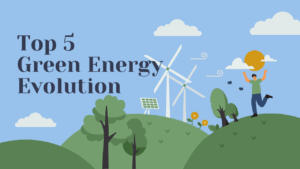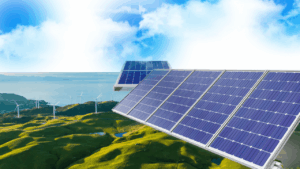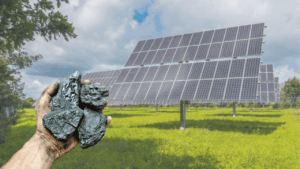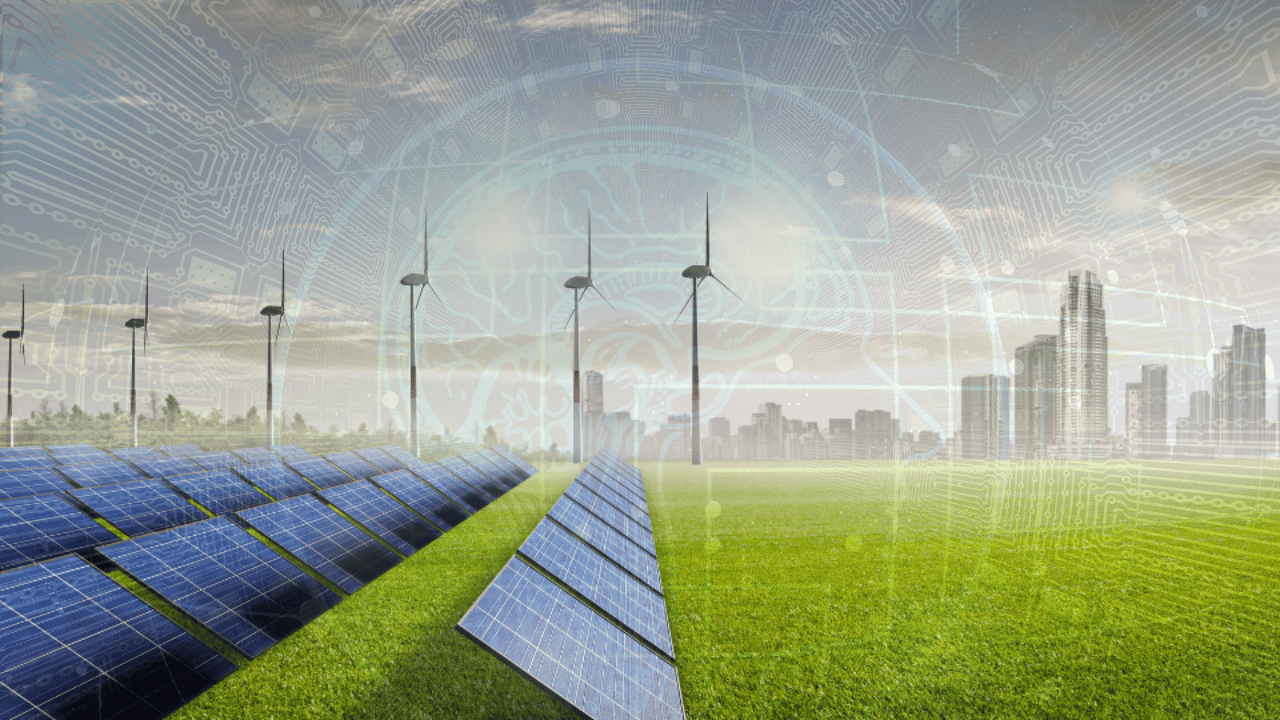In the race toward a sustainable future, clean energy stands at the forefront of global innovation. But while renewable sources like solar, wind, and hydro power hold immense promise, they also face major challenges from inconsistent supply to high storage costs and complex grid integration. That’s where Artificial Intelligence (AI) is making a revolutionary impact.

AI is not just enhancing the efficiency of renewable energy systems; it’s completely redefining how energy is produced, distributed, and consumed. Through predictive analytics, automation, and smart decision-making, AI is helping the world transition to a cleaner, more reliable, and cost-effective energy future.
The Challenges in Clean Energy
Before diving into AI’s contributions, it’s important to understand the primary obstacles the clean energy sector faces:

- Intermittency and Variability – Solar and wind power depend on natural conditions that are unpredictable. Cloud cover, calm winds, or unexpected storms can disrupt energy generation.
- Grid Stability – Traditional energy grids were designed for steady, centralized power generation. Integrating numerous renewable sources often destabilizes these systems.
- Energy Storage – Storing renewable energy efficiently is difficult and costly, especially for large-scale operations.
- Maintenance Costs – Renewable infrastructure requires constant monitoring and timely maintenance to avoid breakdowns.
- Project Planning and Deployment – Determining the best sites for solar farms, optimizing layouts, and balancing environmental factors are time-consuming processes.
AI has emerged as a powerful tool to overcome these barriers, making renewable energy more predictable, efficient, and accessible.

AI Applications Transforming the Clean Energy Sector
Artificial Intelligence is revolutionizing clean energy in multiple ways from improving forecasting accuracy to automating operations. Here are the most significant applications:
1. Smarter Renewable Energy Forecasting

AI algorithms analyze massive datasets including weather conditions, satellite imagery, and energy output trends to predict how much energy solar panels or wind turbines will generate. These accurate forecasts help grid operators plan ahead, ensuring smoother energy distribution and minimizing waste.
Better forecasting also leads to cost savings and improved investment confidence, as energy companies can plan for fluctuations more effectively.

2. Intelligent Grid Management
Modern smart grids use AI to balance energy supply and demand in real-time. When energy production drops due to poor weather, AI automatically reallocates resources or activates stored reserves. Similarly, when production surges, AI helps store or redirect excess power efficiently.
AI also supports demand response systems, where electricity consumption patterns are adjusted dynamically for example, by lowering industrial energy use during peak hours or powering up storage when demand is low.
3. Optimizing Energy Storage Systems
Energy storage plays a crucial role in stabilizing renewable energy systems. AI enables better battery management, deciding when to store or release power to maximize efficiency and lifespan.
Predictive AI models can analyze weather patterns and energy consumption trends to ensure that storage systems are charged during high production periods and discharged during demand peaks. This optimization not only extends battery life but also minimizes energy loss.
4. Predictive Maintenance for Renewable Infrastructure
AI-powered monitoring systems can detect early signs of wear or failure in wind turbines, solar panels, and other infrastructure. By analyzing vibration data, temperature, and operational patterns, AI predicts when maintenance is needed before breakdowns occur. This predictive maintenance approach saves money, reduces downtime, and extends the operational lifespan of renewable energy assets.
5. Smart Planning and Design Optimization
Selecting the right location for renewable projects is crucial for maximizing output. AI-driven tools analyze environmental data, land topography, and weather patterns to determine the best sites for solar or wind installations.
AI also assists in design optimization, helping engineers position solar panels or turbine blades for maximum exposure and efficiency. Moreover, machine learning accelerates materials research, leading to the discovery of cheaper and more sustainable materials for solar cells and batteries.
6. Integration of Distributed Energy Resources
With the rise of rooftop solar panels, microgrids, and local energy producers, managing distributed systems has become increasingly complex. AI helps coordinate these smaller units through Distributed Energy Resource Management Systems (DERMS).
By analyzing supply, demand, and real-time data, AI ensures energy is distributed effectively between local producers and consumers, creating more stable and self-sufficient microgrids especially valuable in remote or disaster-prone areas.
Real-World Impacts of AI in Clean Energy
Across the globe, AI is already transforming the clean energy landscape. Governments and energy providers are using AI for grid optimization, renewable forecasting, and system resilience. For example:
- AI-driven models improve wind and solar energy forecasting accuracy by up to 25%, reducing operational costs.
- Smart grids equipped with AI have improved response times and reduced energy waste significantly.
- Predictive maintenance systems have cut operational costs for renewable projects by millions annually.
These results demonstrate AI’s potential not only to make clean energy more efficient but also to make it economically competitive with traditional energy sources.
Challenges in Implementing AI for Clean Energy
Despite its promise, AI integration in clean energy is not without hurdles:
- Data Availability – Reliable AI predictions require accurate and abundant data. Many regions still lack the necessary infrastructure for collecting and processing such data.
- High Computational Demands – Running AI models consumes energy, which can counter sustainability goals if powered by non-renewable sources.
- Integration Complexity – Linking AI systems with traditional grid technology can be complicated and costly.
- Policy and Regulation – Energy regulations often lag behind technological innovation, slowing AI adoption.
- Ethical and Equity Concerns – Ensuring all regions, including developing areas, benefit from AI-driven clean energy is crucial to global sustainability goals.
Conclusion
Artificial Intelligence is no longer a futuristic concept, it’s the backbone of the modern clean energy revolution. By enhancing prediction accuracy, optimizing storage, automating grids, and improving maintenance, AI is helping to unlock the true potential of renewable energy.
As nations strive for net-zero emissions, the synergy between AI and clean energy will define the path forward. A smarter, greener, and more resilient energy system is within reach, and AI is the key driving force turning that vision into reality.

